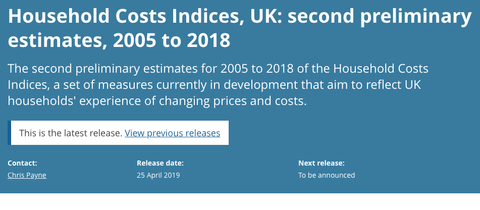Renters have a higher cost of living than homeowners, according to the latest official data.
Homeowners have seen their cost of living rise by 2.3% a year on average between 2005 and 2018.
In the same period, private renters have had a 2.5% annual inflation rate, while social renters have paid 2.7%.
The report from the Office for National Statistics concludes that housing costs take a much larger share of spending for private renters than anyone else.
The ONS also explains that income has grown faster than living costs for renters.
“Strong income gains for private renters and the low-cost growth for owner-occupiers means that social renters seem to have gained the least,” said the report.
Private renters have also enjoyed the largest income growth – 46% compared with 42% for social renters and 39% for owner-occupiers.
At the same time, the cost for private renters is up 35%, 3% less than those for social renters and 3% more than the rise for owner-occupiers.
Becky O’Connor, the personal finance specialist at financial firm Royal London, said: “These statistics show the already vulnerable being hit hardest by rising living costs. It is telling that the ONS explicitly draws the distinction between costs for homeowners and those in private rented accommodation.
“Private renters not only face greater insecurity of tenure but also higher costs for the privilege. This affects their ability to save a deposit, putting home ownership further out of reach and trapping them for longer in rented homes.”
Household cost comparison – Owners, private renters and social renters

Source: ONS




